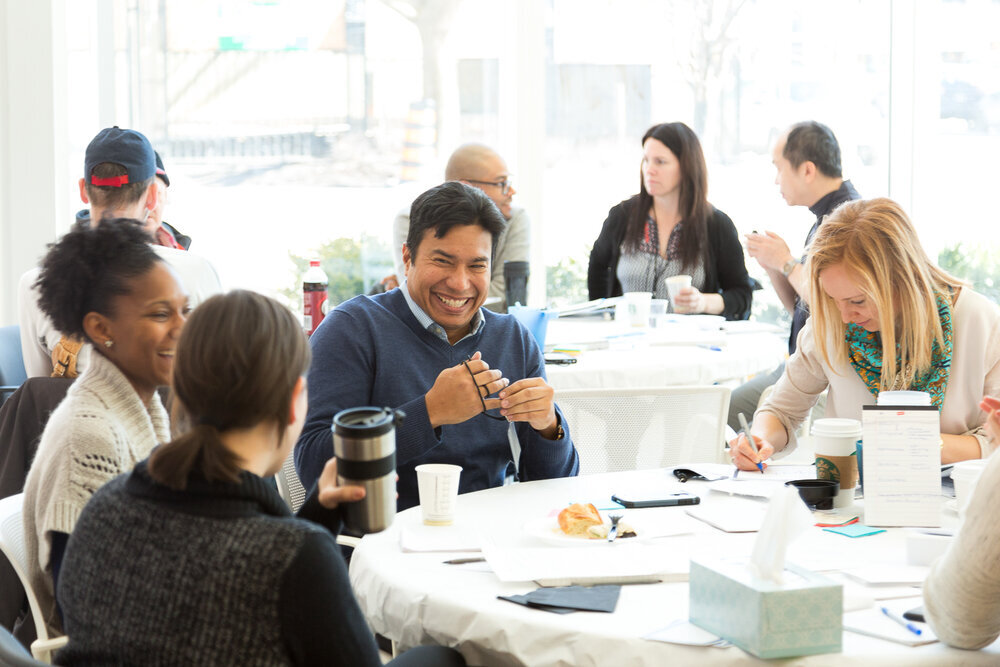Formal response
The commissioning authority should publish a formal public response to the Assembly recommendations, outlining which recommendations they intend to implement and those they will not, with clear justifications as to why, and further details.
Regular follow-up
The implementation of accepted recommendations should be monitored with regular public progress reports. The first one should be timed to occur 3 months after the Assembly, and followed by updates every 6 months after that.
Ways to follow-up
To support and strengthen the follow-up process different solutions can be set up:
A follow-up committee comprised of randomly selected Assembly Members with a mandate to monitor the implementation of recommendations
Tracking the implementation of recommendations via a dedicated online platform or database of legal proposals
By involving civil society organisations to help evaluate the response of the commissioning organisation
Evaluation report
In addition to follow-up on recommendations, the Assembly evaluation report should be made publicly available and communicated.
Broader impact
Beyond the direct result of implementation of recommendations, Citizens’ Assemblies can have impact by shaping public discourse and raising awareness about and understanding of a policy issue amongst the wider public, building support for Citizens’ Assemblies, opening up alternative visions of the future, and ways of working together.
Here are a few studies that capture examples of such broader impact: increased sense of political self-confidence by Assembly Members and other citizens who heard about it taking place and wider use of Citizens' Assemblies over the long term by public authorities.
How to take care of Assembly Members after the Assembly?
For most Assembly Members, coming together with a group of diverse peers to contribute meaningfully to public decision-making is a once-in-a-lifetime experience. Assembly Members feel increased capacity for self-expression, deliberation and critical thinking, together with an increased knowledge of and interest in public decision-making. Once the Assembly is over, they should be encouraged to stay in touch with each other, and remain engaged if they choose.
Click on the boxes below to find out more:
1. Staying in the loop
At a minimum, Members should be kept in the loop about the uptake of their recommendations and invited to take part in any next steps.
One way to do so is to bring Assembly Members together to review any actions taken on the recommendations they have produced in a year’s time.
2. Staying in touch
Project team should establish communication channels for Members to be able exchange and stay in touch.
Some operators have set up Citizens’ Assembly Member alumni networks to bring the community together regularly.
3. Staying engaged
Members should be supported if they want to speak about their experiences and recommendations to their communities or the broader public.
They can also be invited to become volunteers or facilitators at future Assemblies.

Organising a reflection session
Once the Assembly is over, it is a good time to bring together those involved in commissioning and implementing the Assembly, and other key stakeholders, to reflect on how this experience can enable a larger shift in democracy toward permanent deliberative institutions with citizens selected by lottery at their heart.
In what ways has the process of organising a Citizens' Assembly been useful? How can these benefits be amplified? For what policy issues? How can organisers build on this experience and these learnings? How can they build on this momentum, awareness, and capacity created?
What are the benefits of embedding citizen deliberation?
OECD analysis of examples of standing Citizens’ Assemblies has found that making citizen deliberation a regular part of democratic governance has important benefits, such as:
Allowing public decision makers to make better decisions on difficult issues, as well as more decisions with long-term impacts that require ongoing citizen input (such as on climate change, biodiversity loss, emerging technology, urban planning, infrastructure investment, and other complex issues).
Enhancing public trust. Public trust has been declining for decades. A one-off Citizens' Assembly can make a difference, but it is the regular practice of public deliberation that gives people and decision makers the opportunity to build mutual trust.
Making Citizens’ Assemblies easier and less expensive. Costs and resources are saved by not starting from scratch every time.
Strengthening society’s agency and democratic fitness. Adding public deliberation and selection by lottery to democracy extends the privilege of representation to a much larger group of people. It also exponentially increases the positive democratic dividend of participation.
Contributing towards the emergence of the next democratic paradigm with new institutions for governance that give people agency and dignity through participation, the distribution of equal political power through representation by lottery (sortition), and by channelling collective wisdom.
Designing for systemic change
Various designs of standing Citizens’ Assemblies have been implemented globally. Similar to designing a one-off Assembly, designing a standing one starts with pinpointing the problem that needs to be solved. Where would ongoing and empowered citizen engagement would be helpful? Have you noticed opportunities as you worked on an ad-hoc Assembly?
Designing a standing Citizens’ Assembly includes a range of additional considerations - it requires a deeper analysis of how public decisions are taken in a particular policy area or institution, understanding existing legal and institutional constraints, and working to design the right model of a standing Assembly as well as how it can sustain and evolve.
DemocracyNext specialises in designing such empowered standing Assemblies - get in touch with us to find out more. Our approach is comprised of three steps:
01. Understand the context
How are decisions taken at the moment?
Who are the key stakeholders?
What are the existing legal and institutional constraints?
How are citizens involved at the moment?
What are the problems we want to solve with systemic citizen deliberation?
02. Co-design the Assembly
What will be the mandate and the functions of the Assembly (agenda setting, evaluating proposals, providing recommendations, follow-up)?
How will the ongoing Assembly ensure representativeness of society?
How it will connect to other institutions and citizen participation initiatives?
03. Sustain and evolve
What regulatory/legislative changes can help lower barriers to participation?
What supporting infrastructure and resources are needed to run the Assembly more efficiently and more sustainably?
How will the systemic model evolve and improve in the future?
Infrastructure for permanence
Running a one-off Assembly is a great way to build capacity to organise Citizens’ Assemblies in the future, because it helps identify any regulatory or legal improvements that would make it easier to run other processes in the future and begins raising awareness, understanding and support for citizen deliberation. All of these threads can be built on to develop the necessary legal, cultural, and physical infrastructure to embed Citizens’ Assemblies in public decision making in a systematic way.
Consider:
What regulatory changes are needed that would enable public institutions to initiate citizen deliberation more easily and allow them to give Assemblies a meaningful mandate and decision making power?
What laws, regulations or systems need to be improved or created to make it easier to run selection by lottery, compensate Assembly Members for their time, or enable them to take time off work to take part in Assemblies?
What existing or new systems could be used to support the follow-up of the implementation of recommendations produced by Assembly Members? For example, could they be registered and trackable on existing bill registers on national, regional, local levels?
Where can budget and other resources be secured that is dedicated to citizen deliberation?
How can knowledge and expertise how to run Citizens' Assemblies be preserved and transmitted to other public institutions?
Are there enough physical spaces that can comfortably host Citizens’ Assemblies and support a rigorous deliberation?
